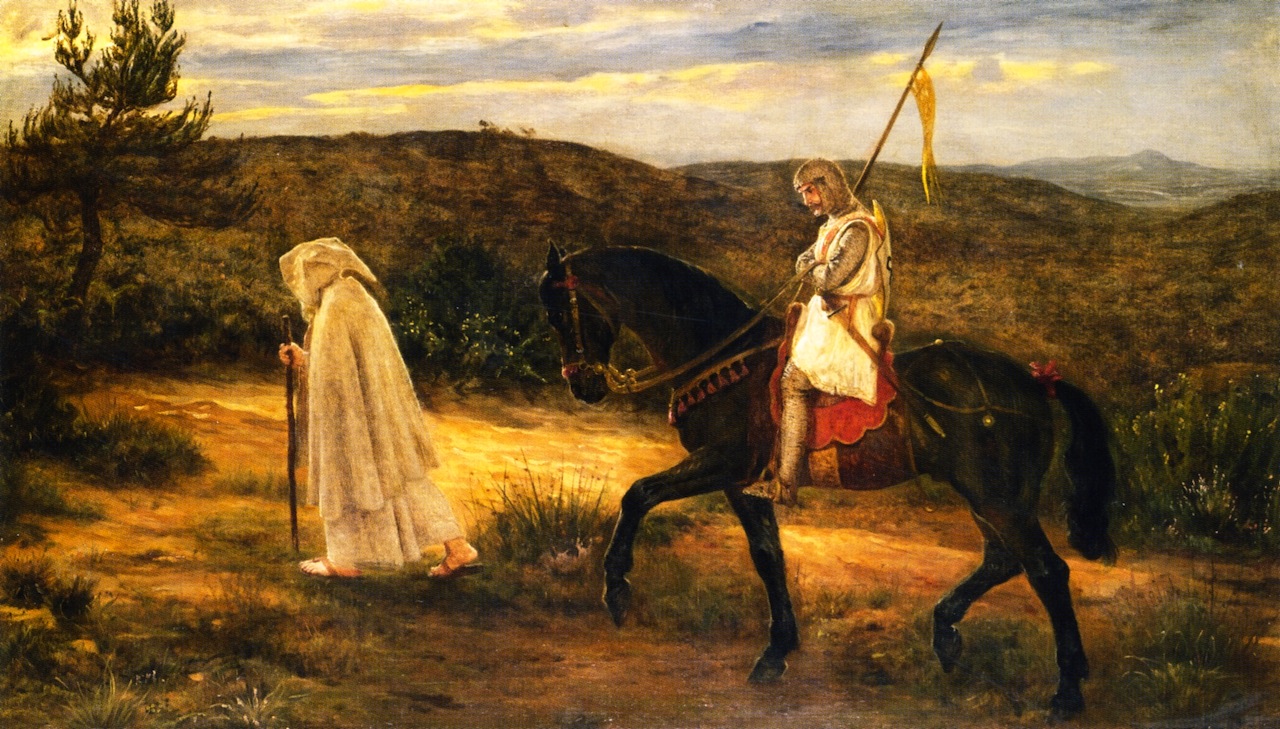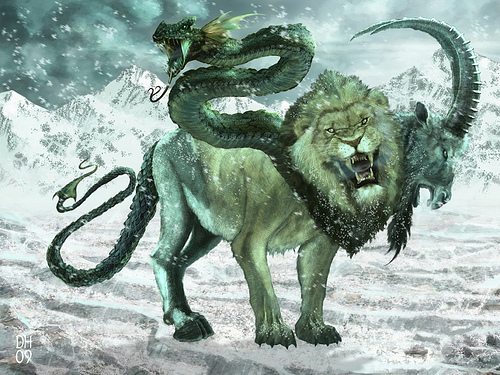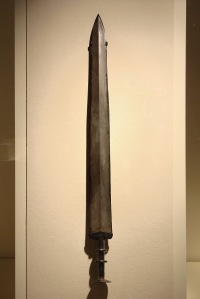Ever look at the format of older books? After you pick up a handful, you’ll likely realize that compared to modern novels, there was a lot of white space in the margins.
This was commonplace in the days of letterpress printing, and likely a necessity of the process. But even before movable type, when books were completely transcribed, there was quite a wide margin between the end of the text and the end of the page. Interestingly enough, monks would often fill this space up too; not just with text, captions or footnotes, but also with works of art.
Marginalia’s a bit of a lost art form these days, reserved for Mad Magazine and high school textbooks, but its history is both fascinating and impressive.
Some of the first known markings to be found inside transcribed book margins were old scholion, kind of your ancient-world footnote. They contained translation notes, contextual references and sometimes a scribe’s personal reflections on the text he was working on.
And remember, printing was a much bigger deal before the printing press, so you’ll often find corrections inside the margins of books that date farther back.
Some of these have become extremely important throughout the ages. In an ancient manuscript of Homer’s Iliad, the famous “A scholia” contained commentaries that are, in part, some of the most fundamental sources of information on poems pertaining to the Matter of Rome.
For more modern examples, you should probably turn to Edgar Allen Poe, who’s sometimes attributed to coining “marginalia” as a term. He was also a big proponent of marking up books as a reader…

When he was an immigrant boy growing up in New Jersey, the writer Junot Díaz said he felt marginalized. But that feeling was dispelled somewhat in 1981 when he was in sixth grade. He and his buddies, adventuring pals with roots in distant realms — Egypt, Ireland, Cuba and the Dominican Republic — became “totally sucked in,” he said, by a “completely radical concept: role-playing,” in the form of Dungeons & Dragons.
Playing D&D and spinning tales of heroic quests, “we welfare kids could travel,” Mr. Díaz, 45, said in an email interview, “have adventures, succeed, be powerful, triumph, fail and be in ways that would have been impossible in the larger real world.”
“For nerds like us, D&D hit like an extra horizon,” he added. The game functioned as “a sort of storytelling apprenticeship.”
Now the much-played and much-mocked Dungeons & Dragons, the first commercially available role-playing game, has turned 40. In D&D players gather around a table, not a video screen. Together they use low-tech tools like hand-drawn maps and miniature figurines to tell stories of brave and cunning protagonists such as elfish wizards and dwarfish warriors who explore dungeons and battle orcs, trolls and mind flayers. Sacks of dice and vast rule books determine the outcome of the game’s ongoing, free-form story.

For certain writers, especially those raised in the 1970s and ’80s, all that time spent in basements has paid off. D&D helped jump-start their creative lives. As Mr. Díaz said, “It’s been a formative narrative media for all sorts of writers.”
The league of ex-gamer writers also includes the “weird fiction” authorChina Miéville (“The City & the City”); Brent Hartinger (author of “Geography Club,” a novel about gay and bisexual teenagers); the sci-fi and young adult author Cory Doctorow; the poet and fiction writer Sherman Alexie; the comedian Stephen Colbert; George R. R. Martin, author of the “A Song of Ice and Fire” series (who still enjoys role-playing games). Others who have been influenced are television and film storytellers and entertainers like Robin Williams, Matt Groening (“The Simpsons”), Dan Harmon (“Community”) and Chris Weitz (“American Pie”).
With the release of the rebooted Dungeons & Dragons Starter Set on Tuesday, and more advanced D&D rule books throughout the summer, another generation of once-and-future wordsmiths may find inspiration in the scribbled dungeon map and the secret behind Queen of the Demonweb Pits.
Mr. Díaz, who teaches writing at the Massachusetts Institute of Technology, said his first novel, the Pulitzer Prize-winning “The Brief Wondrous Life of Oscar Wao,” was written “in honor of my gaming years.” Oscar, its protagonist, is “a role-playing-game fanatic.” Wanting to become the Dominican J. R. R. Tolkien, he cranks out “10, 15, 20 pages a day” of fantasy-inspired fiction.
Though Mr. Díaz never became a fantasy writer, he attributes his literary success, in part, to his “early years profoundly embedded and invested in fantastic narratives.” From D&D, he said, he “learned a lot of important essentials about storytelling, about giving the reader enough room to play.”
And, he said, he was typically his group’s Dungeon Master, the game’s quasi-narrator, rules referee and fate giver.
The Dungeon Master must create a believable world with a back story, adventures the players might encounter and options for plot twists. That requires skills as varied as a theater director, researcher and psychologist — all traits integral to writing. (Mr. Díaz said his boyhood gaming group was “more like an improv group with some dice.”)
Sharyn McCrumb, 66, who writes the Ballad Novels series set in Appalachia, was similarly influenced, and in her comic novel “Bimbos of the Death Sun” D&D even helps solve a murder.
“I always, always wanted to be the Dungeon Master because that’s where the creativity lies — in thinking up places, characters and situations,” Ms. McCrumb said. “If done well, a game can be a novel in itself.”
What makes a D&D story different from novels and other narratives is its improvisational and responsive nature. Plotlines are decided as a group. As a D&D player, “you have to convince other players that your version of the story is interesting and valid,” said Jennifer Grouling, an assistant professor of English at Ball State University who studied D&D players for her book, “The Creation of Narrative in Tabletop Role-Playing Games.”
If a Dungeon Master creates “a boring world with an uninteresting plot,” she said, players can go in a completely different direction; likewise, the referee can veto the action of player. “I think D&D can help build the skills to work collaboratively and to write collaboratively,” she added. (Mr. Díaz called this the “social collaborative component” of D&D.)
Ms. Grouling also cited “a sense of control over stories” as a primary reason people like role-playing games. “D&D is completely in the imagination and the rules are flexible — you don’t have the same limitations” of fiction, or even of a programmed video game, she said. A novel is ultimately a finished thing, written, edited and published, its story set in stone. In D&D, the plot is always fluid; anything can happen.
The playwright and screenwriter David Lindsay-Abaire, 44, who wrote the Pulitzer Prize-winning play “Rabbit Hole,” said D&D “harkens back to an incredibly primitive mode of storytelling,” one that was both “immersive and interactive.” The Dungeon Master resembles “the tribal storyteller who gathers everyone around the fire to tell stories about heroes and gods and monsters,” he said. “It’s a live, communal event, where anything can happen in the moment.”
Mr. Lindsay-Abaire said planning D&D adventures was “some of the very first writing that I did.” And the game taught him not just about plot but also about character development.
Playing D&D has also benefited nonfiction writers. “Serving as Dungeon Master helped me develop a knack for taking the existing elements laid out by the game and weaving them into a coherent narrative,” said Scott Stossel, editor of The Atlantic and author of “My Age of Anxiety: Fear, Hope, Dread, and the Search for Peace of Mind.” “And yet you were constrained by the rules of the D&D universe, which in journalism translates into being constrained by the available, knowable facts.”
Mr. Lindsay-Abaire agreed that fictional worlds need rules. “For a story to be satisfying, an audience needs to understand how the world works,” he said. “ ‘The Hunger Games’ is a perfect example of: ‘O.K., these are the rules of this world, now go! Go play in that world.’ ”
Over and over again, Ms. Grouling said, tabletop role players in her survey compared their gaming experience to “starring in their own movies or writing their own novels.”
As for Mr. Díaz, “Once girls entered the equation in a serious way,” he said, “gaming went right out the window.” But he said he still misses D&D’s arcane pleasures and feels its legacy is still with him: “I’m not sure I would have been able to transition from reader to writer so easily if it had not been for gaming.”















ESSAYS ON GAME DESIGN: To Hell With Balance
Sep 9
Posted by occu77
ESSAYS ON GAME DESIGN
Essay Two: To Hell With Balance
I’m gonna say something that might shock some of you guys. Then again, maybe not.
Balance, go to the Devil, and burn in hell. And while there sip septic tea with him til you’re really needed again. And chances are it won’t be often. But whatever the case, don’t call me, I’ll call you.
I’m working on a fantasy Role Playing Game, I’m not designing an algorithm, doing covalence equations, or writing a computer program to calculate a moonshot at apogee.
So sometimes in-game my players get their noses busted and spleens ruptured by a dragon that in real life they couldn’t ever easily kill. Not with bow-sticks and knives and harsh words anyways. Good, it’ll teach em a lesson about danger and risk and what it actually costs people.
And sometimes they’ll whip out their Horn of Resounding and bring down the walls of Jericho, or slay a few giants with the Jawbone of an ass. Good, sometimes you catch a miracle in midair, deserved or undeserved. Sometimes you get the bear, and sometimes he gets you. That’s life.
But in any case, as far as the game goes, the player is fascinated, interested, intrigued, involved, worried, anxious, and maybe even occasionally excited again. Perhaps shocked and ecstatic from time to time too, just to boot.
Balance, he ain’t my god. I don’t owe him any real sacrifices. He’s more like the grey-skinned Graeæ sisters than bright Apollo. Only one eye to see with, a lot of double talk, the bite of a one-toothed wonder – and in the end, disaster, not glory. You can’t trust Balance to point the way to the future, cause he’s more consumed with his own reflection in the mirror than with anything remotely heroic happening. Static, stale, sterile, sluggish, and simple-minded. A dotard of dullness. No poetry of soul, just an arrested arithmetic of tedium. More Echo and Narcissus, more Sound and Fury, than Thunder and Lightning.
I liked the original version of D&D. I like the 4th Edition, at least many things about it. But I see now that this pernicious idea of “balance” that crept in like the Serpent at Eve in Paradise, balance as an end in itself, especially in a fantasy game of all things, is more assassins’ poison than golden Ambrosia. If I have to kill wonder and potential just to achieve balance, then I have to kill fantasy just to achieve boredom. Thank you modern RPG Fantasy Game Theory of Balance, but I think you’d be happier working as a stock-boy in the warehouse of modern mediocrity, than a gate-keeper to the temples at Mount Olympus.
So Balance, my fine feathered fowl of gutless acquittal, go to hell and burn awhile. Maybe you’ll cook into a decent potpie.
Invention is as invention does. So, I’m gonna start designing fantasy games and adventures again, even D&D ones, where magic happens, miracles save the day, monsters are dangerous and feral, the voice of God rumbles across the sky, kingdoms topple, heroes struggle, players say, “Now that’s what I’m talking ‘bout!” and imaginations catch fire.
Balance can burn in his own oven… and stew in his own juices.
Share this:
Posted in Adventure/Adventure Development, Commentary, DESIGN OF THINGS TO COME, Dungeon Master/Game Master, Essay, Game Design, Gaming, MY WRITINGS AND WORK, Uncategorized
2 Comments
Tags: role playing